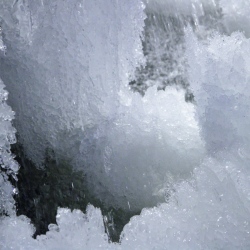
The EU’s Sentinel satellite system has begun monitoring six mighty polar glaciers in near real-time. The sextet – Pine Island and Thwaites in Antarctica; and Jakobshavn, Nioghalvfjerdsfjorden, Zacharae Isstrom and Petermann in Greenland – are major contributors to ongoing sea-level rise.
They are thinning and flowing faster, and scientists believe some of them have become unstable. Routine observation should pick up any sudden changes in behaviour.
The data is currently being gathered by the Sentinel-1a spacecraft, but it will be assisted soon by a sister platform, Sentinel-1b, which the European Space Agency will launch on Friday.
Both have radar instruments that are able to see the glaciers’ surfaces day or night, and in all weathers. They can track activity by keeping a watch on the velocities of crevasses as they move towards the ocean.
Using only Sentinel-1a data for the time being, the service will provide a snapshot of behaviour at least every 12 days. When Sentinel-1b comes online in a few months, the image cycle should improve to once every six days.
"The widespread coverage and short repeat period of Sentinel-1a has revolutionised the way we can observe glaciers around the world," said Dr Anna Hogg from Leeds University.
"This first satellite in Europe’s Copernicus programme is a fantastic new resource, and is proving to be a critical tool for monitoring changes in Antarctic and Greenland ice flow. Things will only get better when Sentinel-1b joins the fray."
The intention is to bring more glaciers into the programme over time. This will be easier when 1b is up and working following a period of commissioning.
